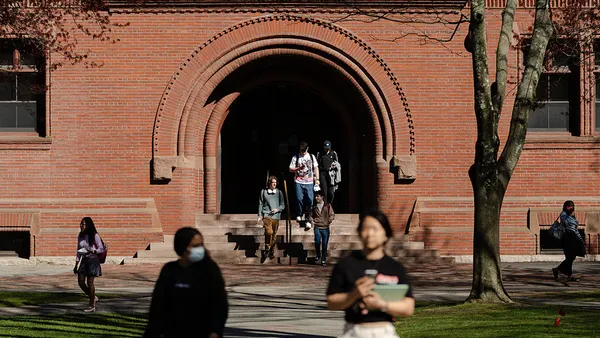Dive Brief:
- The Department of Education has finally started tracking graduation rates of part-time and transfer students.
- The data also now gives outcomes specifically on Pell grant recipients, who weren't tracked separately before.
- First-time, full-time students make up only 47% of all students in higher ed, and one-third of students are receiving Pell grants, meaning federal data year over year was missing a huge contingent of the total population.
Dive Insight:
The changes in the way federal data is tracked are long overdue, but they could bring problems for a number of institutions in the country. Many institutions hide poor outcomes for lower income students by enrolling fewer of these students and lumping their graduation and retention data in with that of more affluent students, who are naturally better prepared to succeed on campus. However, with more students coming from lower income backgrounds than ever before, shedding light on how well schools are or aren't serving them could be a critical first step to actually ensuring their success, which is critical to meeting national security and workforce demands.
It is in this area where historically black colleges and universities and other minority-serving institutions could serve as examples for the rest of the industry. Though often the lowest resourced institutions and traditionally raked over the coals for their often dismal graduation rates, data has shown that when controlled for the same population — that is largely Pell grant recipients and students of color — these institutions actually do a better job of retaining and graduating these students. And they're doing it with less money, which could serve as a lesson for the industry as a whole as it continues to struggle with declining public support against the reality that these students are more expensive to educate.












